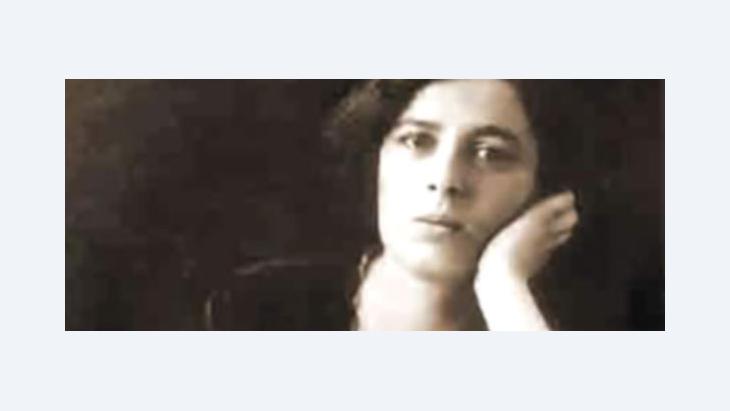Lugging a Piano to Khartoum

Traveling was a male domain well into the nineteenth century, and the few exceptions confirm the rule. One such exception was Lady Mary Wortley Montagu (1689-1762), who accompanied her husband when he was dispatched as ambassador to the Ottoman Empire. Her bid to foster cultural understanding, the posthumously published "Letters from Constantinople" became a classic among travel literature.
"So you see, she wrote on May 19, 1718, from Constantinople, "these people are not as uncouth as we portray them" and even conjectured "that they have a more proper notion of life." The book owes its success not least of all to the author's access to the harem. Exclusion had stirred up the fantasies of male travelers for centuries, giving rise to many peculiar beliefs.
British women as pioneer Orient travelers
It was predominantly British women who made a name for themselves as writers of travelogues. The late nineteenth century was the heyday of adventurous travelogues. Isabel Burton (1831-1896), Isabelle Bird (1831-1904), Anne Blunt (1867-1917), and Gertrude Bell (1868-1926) traveled through Arab countries, and Freya Stark (1893-1993), a British woman born in Paris and brought up in Italy, frequently visited the Middle East between 1928 and 1983 and made a name for herself as a photographer.
The reasons and motives for traveling were quite varied. Snobbish and highbrow representatives of the establishment stood alongside eccentric adventurers. Dedicated wives accompanied their husbands who were traveling as archaeologists, diplomats, or adventurers. Women traveling on their own were fleeing the restrictive social conventions of middle-class Europe.
Apart from the British women, Ida Gräfin von Hahn-Hahn (1805-1880) from Germany, the most successful novelist of her age, and Ida Pfeiffer (1797-1858) from Vienna both made trips to the Orient. The short life of Isabelle Eberhardt (1877-1904), born in Geneva as the daughter of aristocratic Russian emigrants, appears to be so incredible that her biography has been repeatedly challenged.
She traveled through the Algerian Sahara dressed as a man, wrote poems in Arabic, and drowned in the desert in a flash flood at the age of twenty-seven. Hardly less flamboyant and eccentric was Lady Hester Stanhope (1776-1839), whose house in Lebanon attracted travelers to the Orient such as Alphonse de Lamartine and Alexander Kinglake.
The characters of the travelers varied as much as their motives. Their attitudes ranged from open curiosity and sympathy on the one hand to the shameless conceit of superiority and racism on the other. In this respect the traveling ladies were in no way inferior to their male colleagues.
Lugging a piano to Khartoum
Many an expedition became a major feat in logistics. In 1872 Lydie Paschkoff from Russia traveled to Palmyra with a caravan of thirty-three mules, thirty-five camels, twelve donkeys, and twelve horses. Alexine Tinne (1835-1869), heiress of a Dutch sugar baron, embarked on a no less luxuriously outfitted Nile expedition with her mother in 1862.
She traveled with so many servants that her male colleagues, aggrieved in their sense of adventure, sneered and bemoaned that the exploration of Africa, which once demanded so many privations, had been debased to a weekend excursion.
Katharine Petherick, who accompanied her husband John to Sudan in 1861, even took her piano on the arduous and dangerous route through Nubia. At least it was a custom-made piano that could be dismantled into two pieces.
London-Baghdad in eight days
During the nineteenth century some Middle East destinations became so popular that many travelers were annoyed. Emily Beaufort, traveling through Egypt in 1858, mocked the "in vogue, overcrowded Nile." A few years later the Africa traveler Samuel Baker scoffed at Alexine Tinne's expedition, remarking that the tour was becoming so popular that it seemed advisable "to open an inn at the Equator, where travelers could drop in for a beer."
The emerging mass tourism was the drawback to the increasing comfort and security of travel. Mules, donkeys, and camels were replaced by the railroad. With the words "Safety, Rapidity, Economy," the Simplon Orient Express & Taurus Express advertised in 1931 that the route London-Baghdad could be mastered in the record time of eight days in the exclusive sleeping car.
Agatha Christie (1890-1976) traveled the route several times with her husband, the archaeologist Max Mallowan. The writer could not warm up to the much faster form of travel – flying – already available then, with connections between England and Cairo or Baghdad. For her this kind of traveling was too expensive and too boring.
Andreas Pflitsch
© Qantara.de 2005
Translation from German: Nancy Joyce